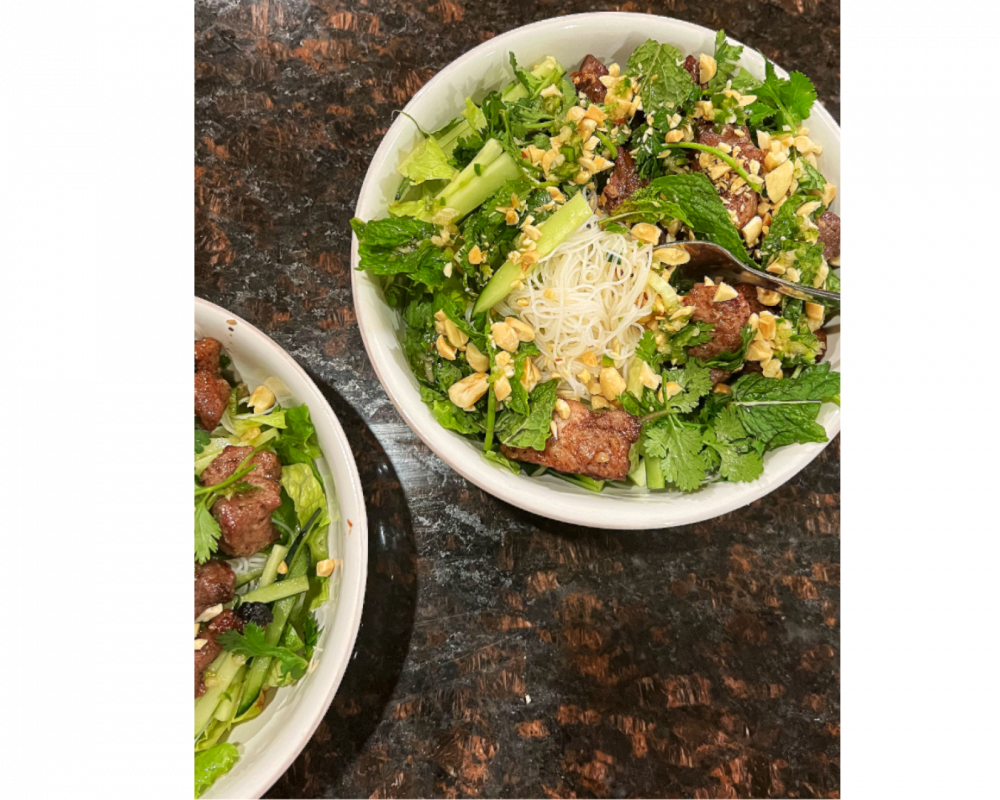Welcome to “‘Noodles Made Me...” a new series in which Milk Street’s Hannah Packman cooks her way through our latest cookbook, “Milk Street Noodles.” Follow along as she shares the tips, tricks and lessons learned along the way.
Welcome back to part two of my quest to cook my way through “Noodles”—my own personal bible dedicated to my favorite food group. Having already tackled Parsley Pesto, which taught me to ditch basil for its herby, clean counterpart, my mission was choosing what to make next. With temperatures in Boston soaring, I wanted something refreshing and cooling. So for recipe number two? Summery Vietnamese-inspired rice noodle bowls.
Yes, I can get a decent rice noodle bowl heaped with meat and crunchy freshness delivered to my door in virtually any city in the world. But can I make one that’s even better and more flavorful than the run-of-the-mill? The answer is yes—along with a crash course on the importance of a perfectly-balanced dish.
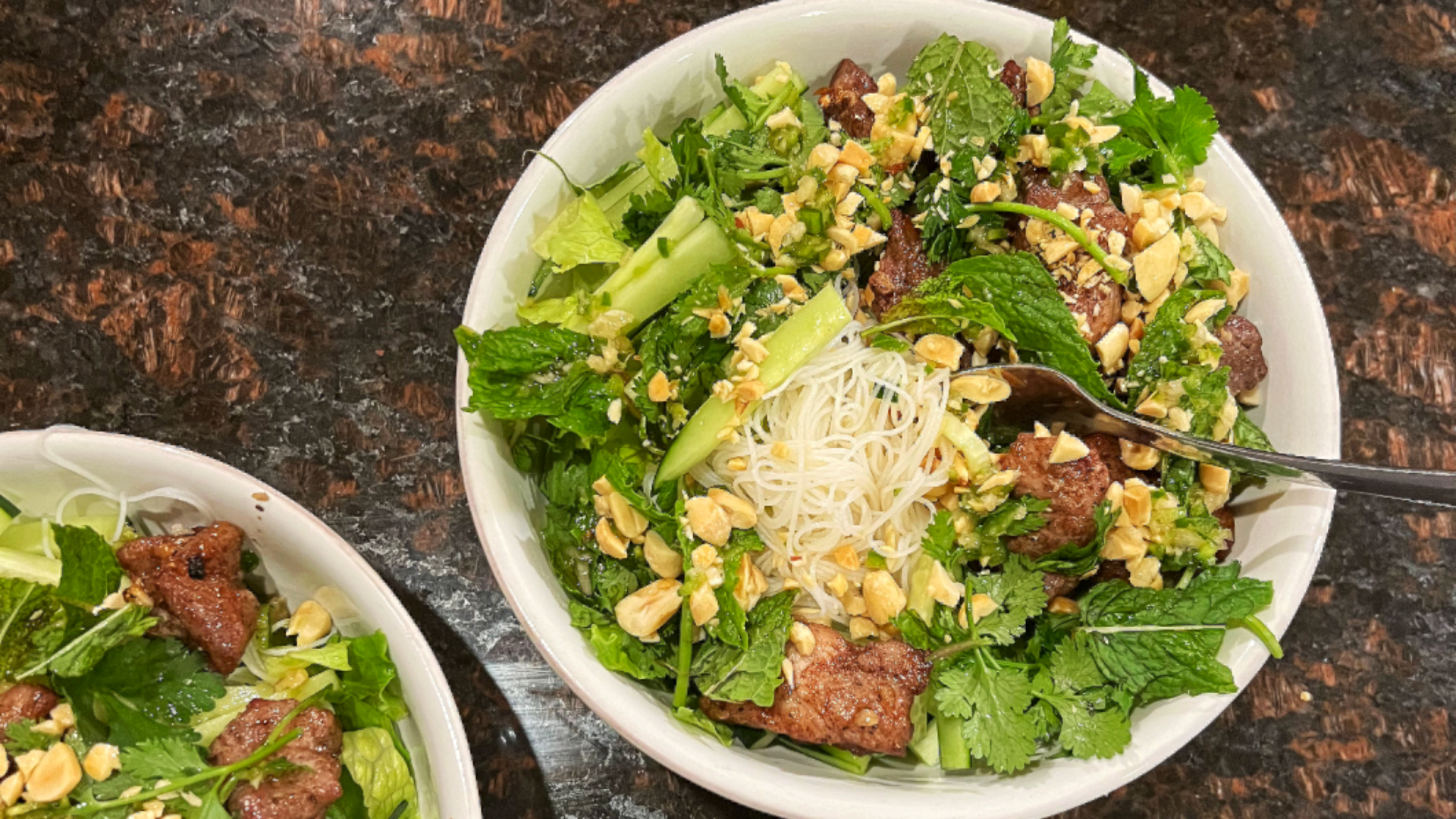
Lesson 2: Vietnamese Rice Noodle Bowls with Broiled Marinated Pork
Guiding Rule: A good noodle bowl relies on balance. While we often think of noodles as the main component of most dishes, in the case of a noodle bowl, the noodles are just the beginning—serving as a canvas to play with flavor, color and texture.
Achieving “balance” is akin to reaching a higher plane in cooking, a principle described with philosophical reverence. “Balance” is synonymous with the artistry of Eric Ripert; it’s the premise of iconic cookbooks; it’s so fundamental that it even extends to color.
For a home cook like me, balance has always been more of a general rule of thumb than something I deem integral to a dish—it’s certainly nice when I achieve it, but it’s never my main focus. The night I made Vietnamese-inspired rice noodles changed all of that.
The recipe for these Vietnamese Rice Noodle Bowls with Broiled Marinated Pork is inspired by a southern Vietnamese favorite called bún thịt nướng. And in essence, that dish is a fantastic marriage of flavors and textures. Bouncy, flavor-absorbing rice noodles are layered with fresh vegetables, grilled marinated pork, herbs, peanuts and other garnishes. Individual bowls are served with a savory-sweet sauce called nước chấm on the side—more on this star ingredient later.
The Milk Street version of the dish is slightly simplified (my wallet and mediocre knife skills were thankful about this). But the ingredients got me thinking.
Keep scrolling to find out...
Step 1: Gather the ingredients
The key players? Vermicelli noodles, pork shoulder, fish sauce, Chinese five-spice, lime juice, serrano chili and garlic, plus some crunchy romaine lettuce, cucumbers and roasted peanuts. I splurged on the good stuff and got Red Boat Fish Sauce—trust me when I tell you, that one is worth the extra few dollars.
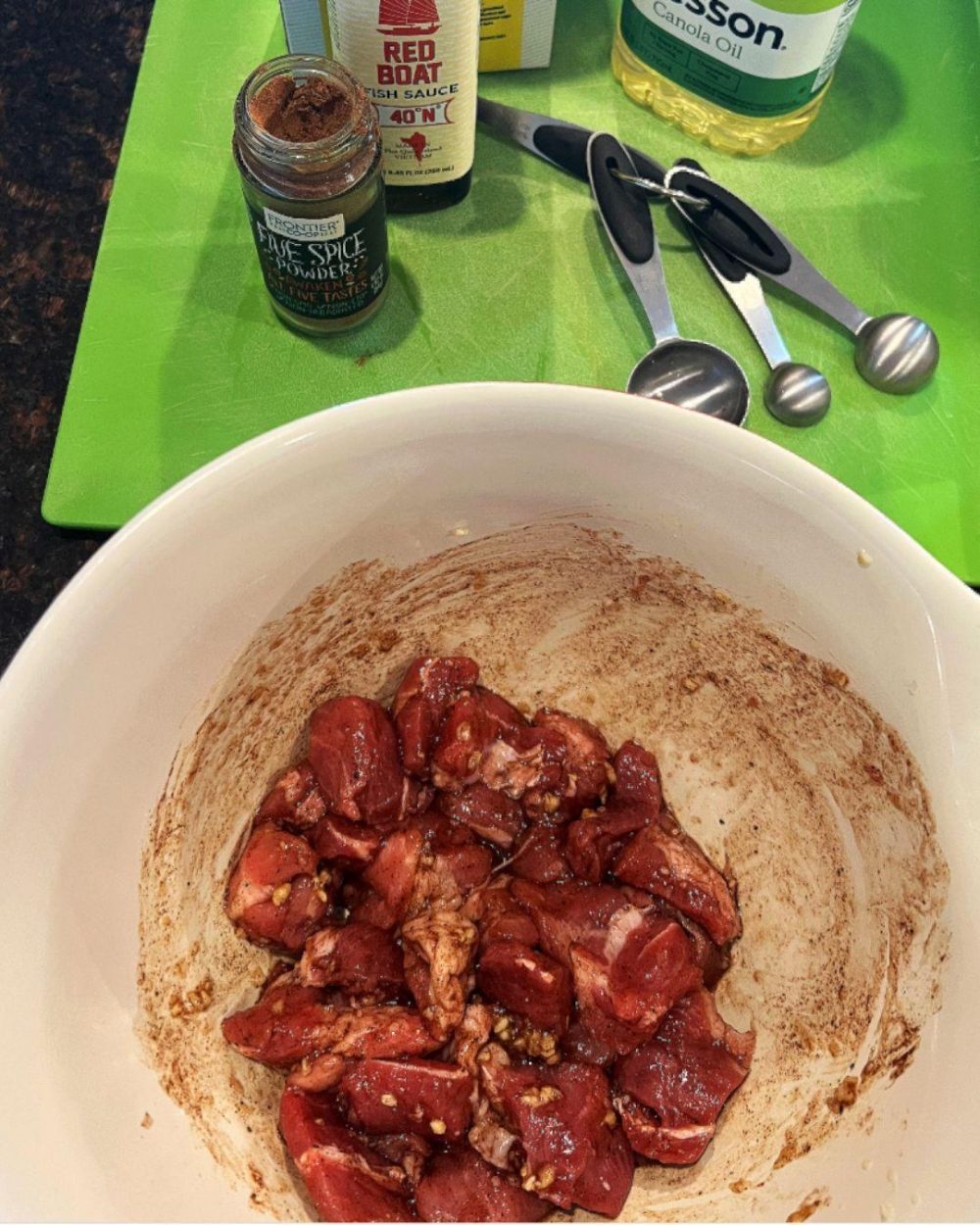
Step 2: Prep the Meat
I started by throwing my pork in the freezer for about 20 minutes, as the headnote suggested, to make it easier to slice thinly. While it chilled, I prepped the marinade—a quick combo of garlic, fish sauce, oil, sugar, five-spice and a bit of salt and pepper. Once out of the freezer and on my cutting board, I did my best to thinly slice the pork into ¼ inch pieces. As always, make sure your knife is sharp! You’ll quickly find out why. Once done, I tossed the pork in the marinade, covered it with plastic wrap and added it into the fridge to chill for the next several hours (though it can sit for up to 24 hours).
Step 3: The Sauce
About five hours later, my dinner guest (and sous chef) showed up to help get the rest of the meal going. First on the list? Nước chấm—otherwise known as the multipurpose sauce/dressing you’ll find accompanying most Vietnamese dishes. And for good reason, it’s magical. So after mincing the serrano and grating garlic, I added fish sauce, lime juice, sugar and water into a small bowl, then whisked it together with the chili and garlic. Sauce done.
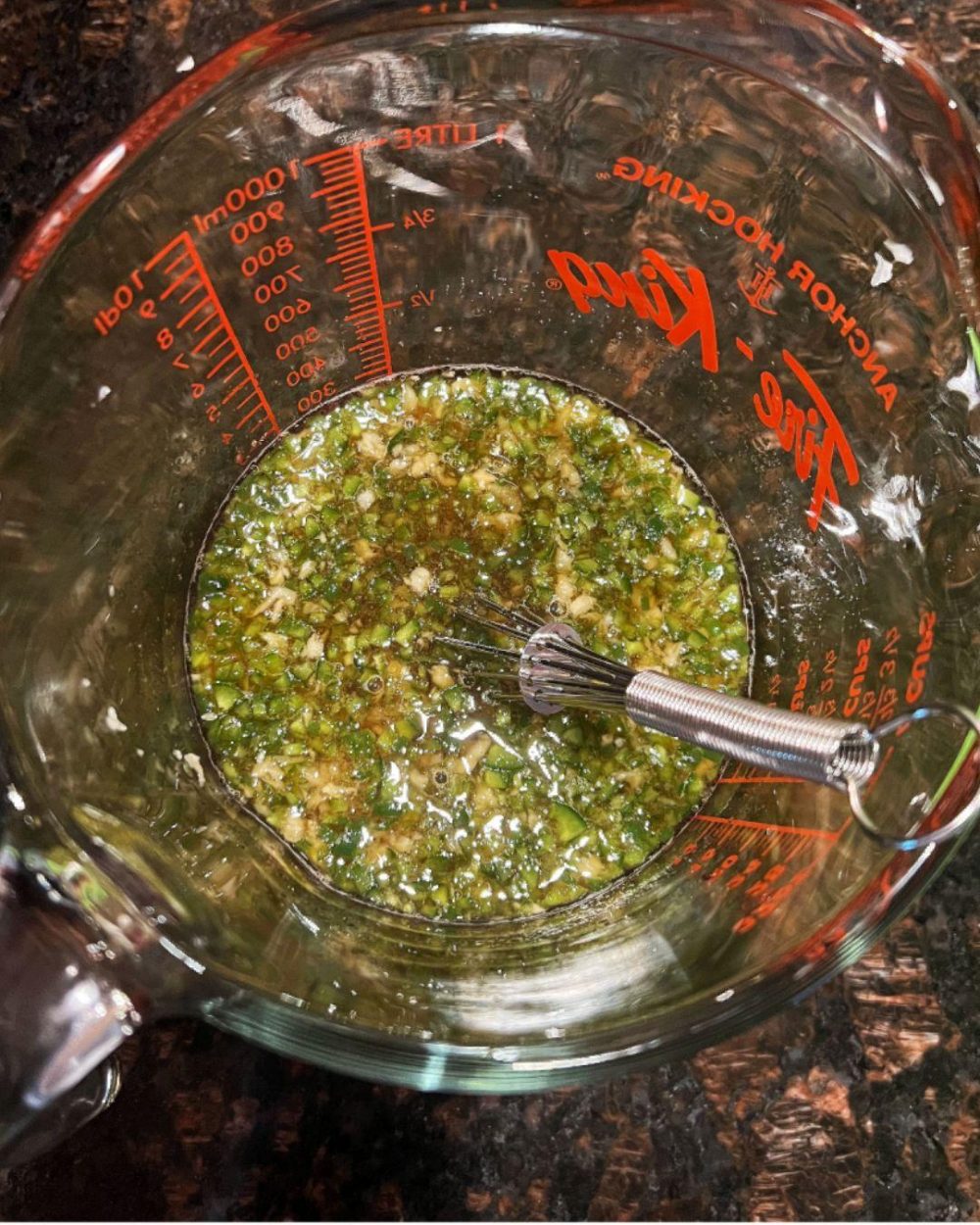
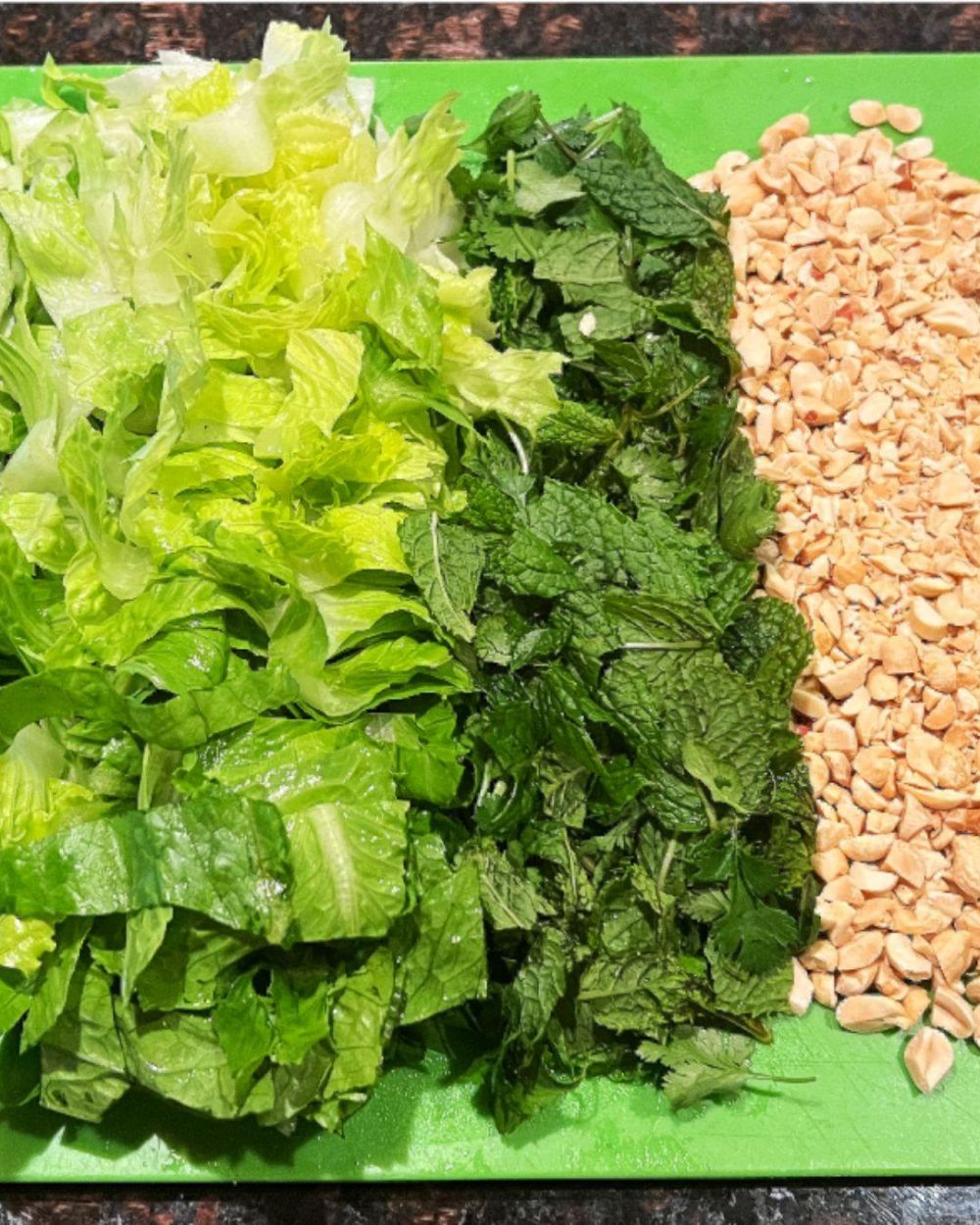
Step 4: Prep the Accompaniments
Now I must admit, I am not the most patient when it comes to prep work. But I am strategic! While I boiled the water for the noodles, I set my sous chef up with my Milk Street Nakiri and a pile of vegetables to prep. The romaine was chopped into forkable pieces, the cucumber cut into matchsticks, the herbs (fresh cilantro and mint from the farmer’s market) hand-torn and the peanuts crushed up.
Step 5: Cook the Meat and Noodles
Because this recipe only requires broiling, I timed cooking my meat and noodles simultaneously for maximum efficiency (note: I was very hungry). So while the water finished boiling, I added a wire rack to a baking sheet and laid the pork across it. It broiled for six minutes on one side and four on the other until caramelized and fragrant in the oven. At the halfway mark, I cooked then rinsed my noodles with cold water to stop them from getting gummy.
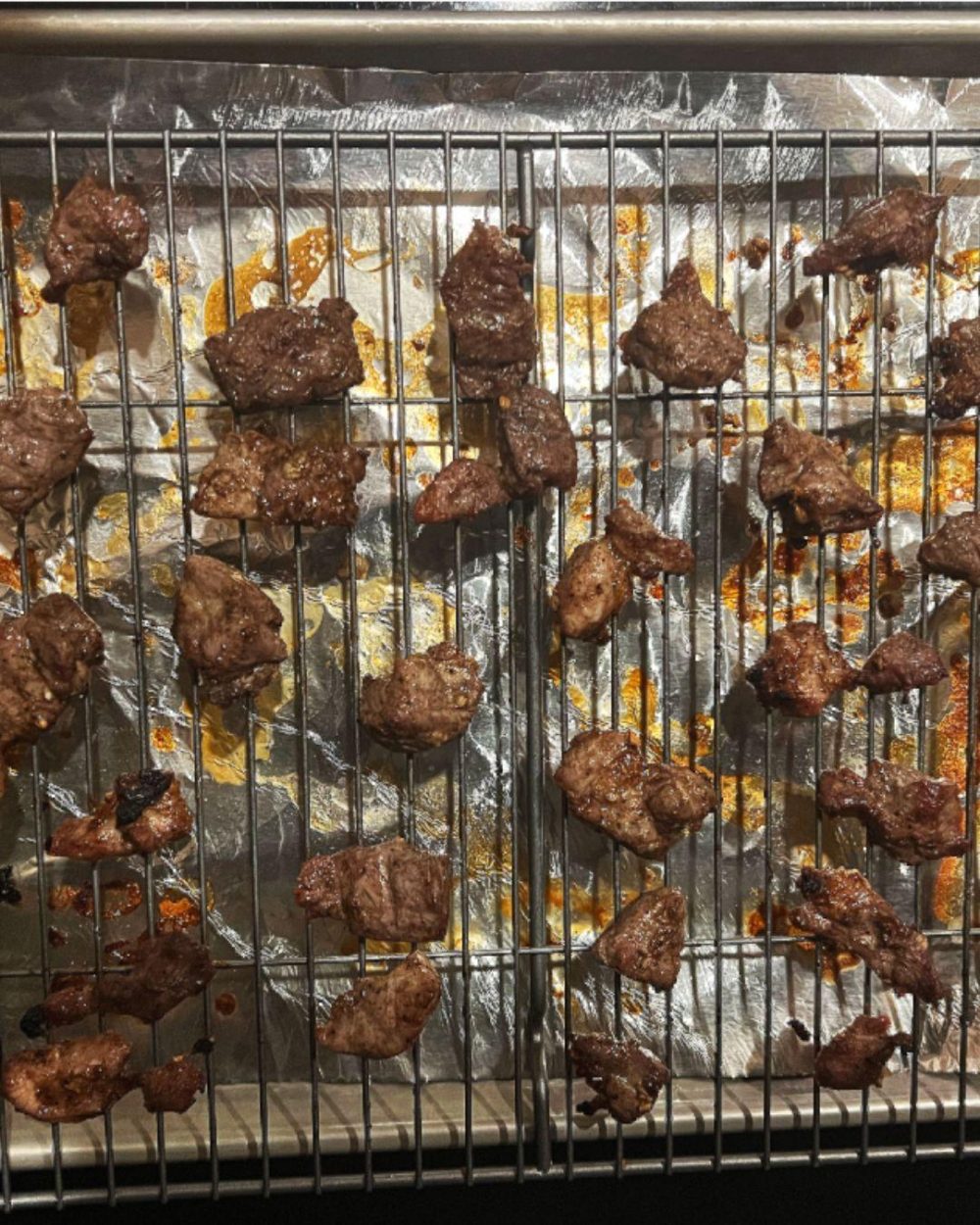
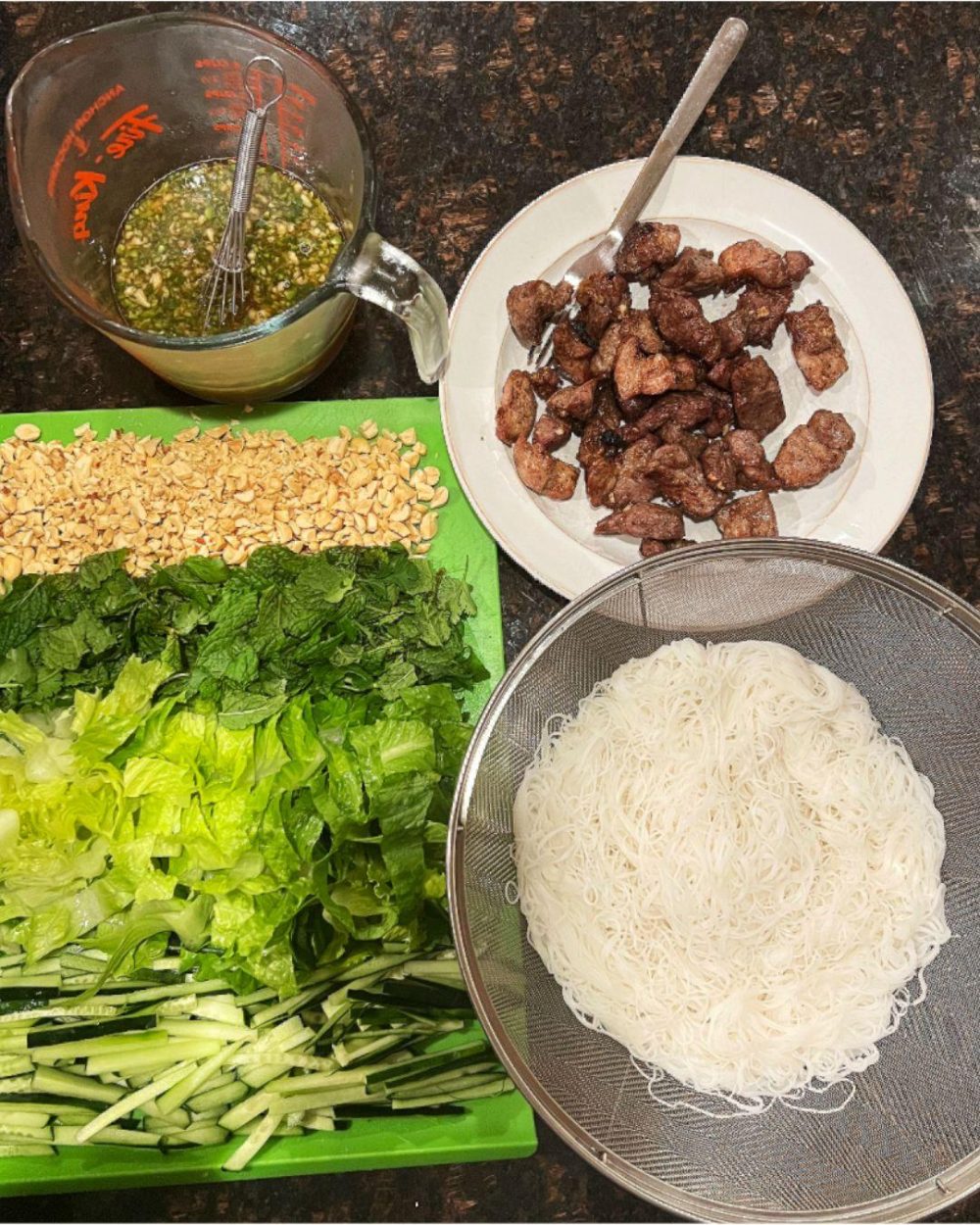
Step 6: Assembly
With all the components cooked and prepped, the final, most exciting step: assembling the bowls. I started by laying down romaine and a big pile of noodles, topping that base with the cucumbers, a few golden pieces of pork and a huge handful of herbs and peanuts. The finishing touch? A hefty drizzle of nước chấm over the top. It looked, smelled and tasted like summer in a bowl.
The richness of pork shoulder was cut with the heat of Serrano chili, and heightened with flavors like briny fish sauce and cooled with mint. Texture was a gradient, from chewy vermicelli, to the light, fresh crunch of cucumbers and romaine, to the hefty bite of crushed peanuts. No one flavor or texture was overpowered by another.
And that my friends, is the gold standard of balance.
And if you're looking for more Milk Street, check out our livestream cooking classes with our favorite chefs, home cooks and friends for global recipes, cooking methods and more.
